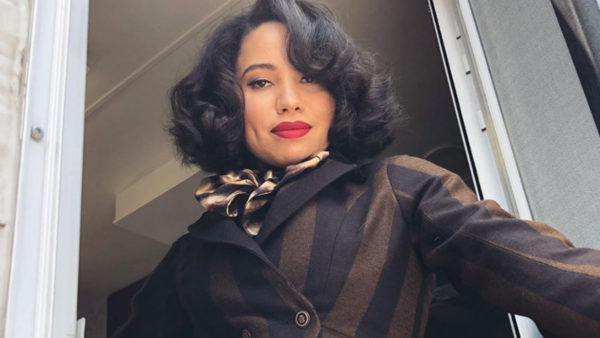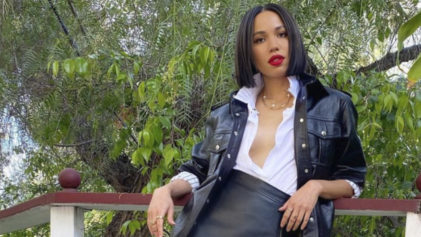The third episode of HBO’s new limited series “Lovecraft Country” centered on Jurnee Smollett’s character, Letitia “Leti” Lewis, as she moved into an old, haunted house in an all-white neighborhood. With the show’s time period set in the Jim Crow-era 1950s, the episode followed her as she navigated the dangers inside of and around her home.
The series, based on the book by Matt Ruff, takes the iconic and absurdly racist beliefs of famed horror writer H.P. Lovecraft and turns them on their head, while also featuring some of his notable monstrous creations.

Smollett has been killing it in her turn as Leti. Not only has her wardrobe been on point, but she’s been giving her all as the fierce, free-spirited dreamer whose reality has been flipped upside down with the introduction of ghosts, monsters, and magic.
Although the series takes place over 60 years in the past, Smollett feels that as far as America’s relationship with race goes, there are still plenty of “similarities” between then and now.
“Unfortunately, it feels sometimes when we take steps forward we also take a few steps back. There are similarities for sure,” she told The Hollywood Reporter.
“I can relate to Leti on so many areas — in my pursuit of equal opportunities, in my pursuit of the leveling of the playing field. The feeling of displacement. I grew up feeling that. I still feel that,” she continued. “Are you truly at home? There was a dead fish placed on my family’s lawn the day of the Million Man March when I was a kid. I know the feeling of fear you have while driving around Black. I know what it feels like to be discounted by Black men and white people.”
Smollett went on to explain that she took researching her role as a radical Black woman in the 1950s seriously. Through that research, she found that she deeply connects with the struggles that the pioneers of those days faced, even in the context of today’s society.
“So these stories [in ‘Lovecraft Country’] are timely, but they’re also deeply personal. But to be female and Black in 1955, yes I did my research,” she explained. “I wanted to know what made an Eartha Kitt have such fire. What made a Gwendolyn Brooks be so audacious with her words. What made a Lorraine Hansbury be so reflective and nuanced in her storytelling. What allowed that, and also, what did they have to work against? But I can relate to it. Even in 2020.”
The story airing during a time of especially high racial tension in America due to the brutal killings of Black people at the hands of police is a fact that’s not lost on the actress. In fact, it makes her feel like she’s doing her part to help contribute to the movement.
“What encourages me and excites me about being in a story like “Lovecraft,” it goes back to the widely quoted Nina Simone, [who said]: ‘It’s the duty of the artist to reflect these times,'” she told Essence.
“I know what it’s like to have that great shock that James Baldwin talks about,” she continued. “When you discover this nation, who you owe your identity to, right, has yet to create a space for you. I know this, this is the blood memory we talk about. I’m excited because I feel like “Lovecraft Country” contributes to this discussion. And doesn’t negate it.”


